I’m always a bit reluctant to go to Naoshima during the Setouchi Triennale.
The thing is that too many people reduce the Triennale to Naoshima only. How many times have I read blogs or heard people waiting for the Triennale to be happening to visit Naoshima and Naoshima only? A bit counterproductive don’t you think? And that’s the source of my main problem with the island during the Triennale. There are simply too many people on Naoshima during the festival. And the only reason why I’ll accept to go then is that it’s cheaper to visit Naoshima with a Triennale Art Passport.
However, last Spring was a bit special. I have to admit that – apart from a few exceptions – the art on Naoshima is the one I find the least interesting in the area. To give you an idea, I haven’t been back to the Benesse House Museum since 2010, maybe I’ll go this Fall, maybe not. Also, I went to the island last October, and I wasn’t that eager yet to see the few things I really like so soon after. So, no, I wasn’t in the mood to spend half of my day waiting in line here and there on the island.
Add to that the fact that the installations and museums managed by Benesse Art Site are very rarely “kid friendly” and the thought of my daughter suddenly throwing a temper tantrum in a middle of the Lee Ufan Museum is a bit dreadful.
It was Spring though, and the cherry blossoms were in bloom, so we decided to go to the island, but visit it in a bit unusual way, that is focusing mostly on the outdoor artworks (there are quite a few on the island).
As soon as we got off the ferry, we took the Chichu Art Museum bus (I think that this bus – that allows you to get to the museum directly and without connection – runs only during the Triennale) and from there, we started our small walkabout on Naoshima. Our first destination was a new work of art called Sense in the Distance by Chiyoko Todaka.
Not exactly new though, as it was a remake of Teshima Sense in 2010. I didn’t get to see it then, and I was pretty excited to finally getting to experience this artwork that I had always found fascinating (through the pictures I saw).
Unfortunately, it was my first disappointment of the day:
Six years ago, on Teshima, it was the entire pond that was covered by several dozens of these small structures, and it really gave an intriguing atmosphere to the place. On Naoshima? There was maybe only one dozen of those at most, and they were located in a larger pond than the one on Teshima. The effect was… Well… I’m not sure what the effect was. It almost looked that those things were part of a former larger installation and had been forgotten there or something.
Anyway, just after, and right next to it, Tadao Ando‘s new work on Naoshima was awaiting us. It’s called Labyrinth of Cherry Blossoms and it sounded pretty exciting; a maze made of cherry trees? By Tadao Ando? Definitely one of the new not to be missed landmarks of the island, right?
Wrong.
Another disappointment…
The cherry trees had been planted too recently, and are still too small to create a “maze of flowers”. This is not that much of an issue; this will be fixed in a couple of years. How about the rest? Why call it a labyrinth when it’s just lanes of trees? Was it so difficult to make a real labyrinth (that would have been awesome and that’s what I was expecting, hours of fun)? Or simply call it a different name that doesn’t generate false expectations?
Also, I thought that the goal of the project was to create a place where both locals and visitors could enjoy hanami together. Well, there’s just one small problem. The ground is covered with gravel. Not the most comfortable place to sit and have a picnic. I even feel that this is the reason for this gravel, so that people don’t stay too long, don’t hang out there, they just do hanami in the strictest meaning of the term: “they look at the flowers” and that’s all. In a sense, it sadly reminds me of all of this urban furniture especially designed to prevent loitering that pops up in cities nowadays.
In a sense, it underlines perfectly why I’m not such a big fan of Naoshima. The art there really is in its own “art reservation” cut from the rest of the world and cut from society. When you go to Naoshima, you go enjoy the art and that’s all. As opposed to the other islands where the art is in the villages, around the people, a part of their culture.
In five years living in the area and countless trips to all of the islands, it’s very telling in my opinion that Naoshima is the only island where I have never really spoken to a local and where I don’t know anybody.
Oh well…
Definitely not ready for cherry blossom season yet:
Fortunately, there was an old cherry tree nearby that saved the day:
OK, it wasn’t all negative, going down there, I finally saw a work of art that I had never managed to find before. I never really looked for it either, I just hoped to stumble upon it, I finally did.
Another Rebirth by Kimiyo Mishima:
Note that the content of the trash can is not random and has its place there:
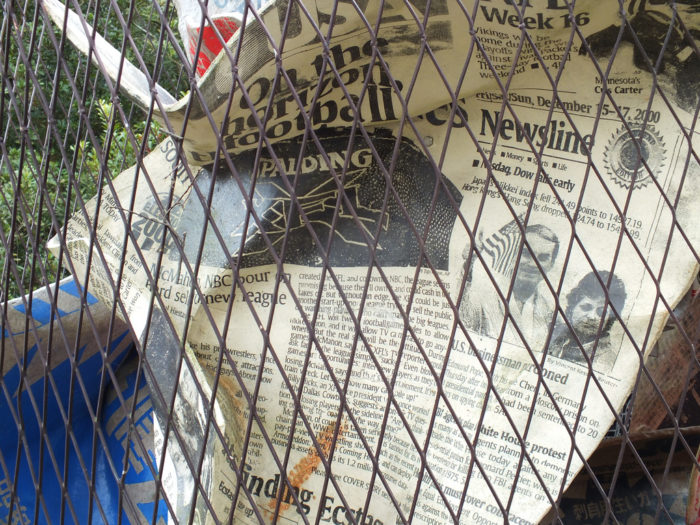
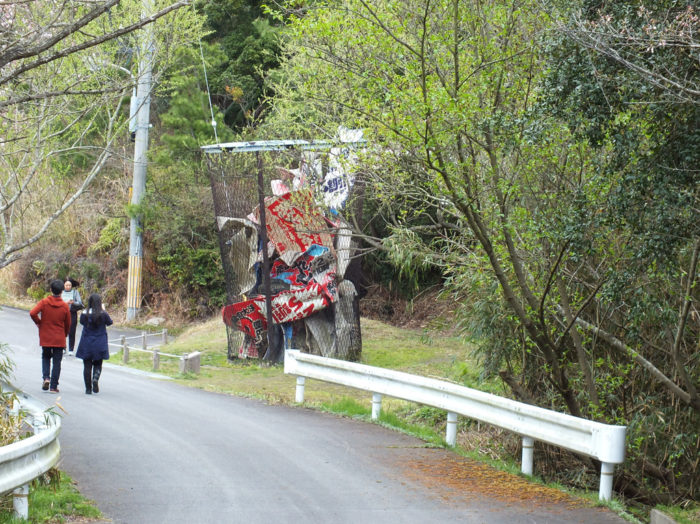
Next, we walked towards the island’s south beach. On our way, the Lee Ufan Museum that we didn’t visit. Right next to its parking lot, our next destination; an artwork that many visitors miss. That is a shame as it’s probably one of the only artworks in all of the island that uses the island’s identity and history as inspiration.
It is called Slag Buddha 88- Eighty-eight Buddha statues created using slag from industrial waste at Teshima by Tsuyoshi Ozawa. A long title, that explains pretty clearly what we’re dealing with:
If you need a bit more information, the 88 Buddha statuettes are an obvious reference to the 88 temples of the Shikoku Pilgrimage, but it’s also a reference to similar local smaller pilgrimages on the islands. Shodoshima has one, Oshima has one, Shiraishijima has one, and I’m also pretty sure Naoshima has its own. However, those little Buddhas are made from a very unique material as it is slag resulting from the treatment of Teshima’s industrial waste.
If you’re not familiar with this sad story, here it is, roughly.
In the 80’s, a company whose name I couldn’t find (it has closed down since) started to use the western tip of Teshima as an industrial dump. It was a completely illegal endeavor. The dump site was supposedly for residue coming from paper making, but it really was for various types of industrial waste that were highly polluting and toxic.
The effects on the environment and on the local population were soon felt and the truth came out. Unfortunately, the problem was far from being solved. Despite many attempts from the local population, the prefectural government kept on ignoring their plight, partly because it was corrupt, partly because who cares about a few fishermen lost on an island where nobody goes?
After a few years during which the population of Teshima did all it could in order to have the world (or at least Japan, or simply Kagawa) start caring about them, a trial finally took place. A trial against the company that had polluted the area, but also against the Prefecture who was an accomplice. And it’s only in the year 2000 that it all ended with a complete victory for the people of Teshima. The Prefecture of Kagawa had to – among other things – completely clean the site, and in order to do that, 500,000 tons of soil and rocks had to be dug out, and moved to nearby Naoshima were a processing plant had been built. As I’m writing these lines, 16 years later, the clean-up is still not complete, although the end is near. Finally.
Which leads us to this artwork that honors both the long historical tradition of pilgrimages in the area as well as reminds us of a more recent and darker history. Something that pretty much all tourists ignore, in every meaning of the term. How many Naoshima visitors know about its industrial side? I’m always intrigued how visitors never wonder about what’s in the northern part of the island when they visit it.
I’ll try to tell you more one day.
In the meantime, back to our current tour of the island.
On the road between the Lee Ufan Museum and the Benesse House Museum, some cherry blossoms:
And of course, an amazing view of the Seto Inland Sea, and Ozuchishima in particular. Ozuchishima that has a triangular shape, as my daughter insists on reminding you:
We soon arrived on the Benesse House Park and Beach where a few more artworks were waiting for us. The choice of artworks experienced that day depends solely on where my daughter wanted to run, play, or simply go while in the park and on the beach. 🙂
Three Squares Vertical Diagonal by George Rickey,
a sculpture that’s better seen on video than on picture (unless you can go, obviously):
Time Exposed by Hiroshi Sugimoto
Seen/Unseen Known/Unknown by Walter de Maria
Drink a Cup of Tea par Kazuo Katase
Blind Blue Landscape by Teresita Fernandez
As I was in the gift shop to buy a birthday present for my dad, I suddenly remembered that I hadn’t read Naoshima Note in quite a while. It’s a small magazine published by and entirely devoted to the Benesse Art Sites. I used to subscribe to it until one day, they stopped subscriptions. Since then, the only place where one can find it is on Naoshima (however, there is a free online version that I warmly advise you). However, even though I like writing and reading online (oh really?), there’s still a little old school part in me, and I think that nothing can beat reading on paper (I should use my tablet more, though).
So, I asked the store clerk whether she had the latest issue. She didn’t. But instead of saying sorry and goodbye, she told me to not move and she grabbed the phone. Then, she made a few phone calls to various shops that are part of Benesse Art Site. I was quite surprised that she would do that. I assume that she did it because she was surprised a foreigner would know the periodical and want to get one to the point of asking for it in broken Japanese.
Sadly, none of the people she called had any copy. Apologizing, she reminded of the existence of the online version and wished me a nice end of my trip on Naoshima. Once again, I was quite and gladly surprised. While the volunteers helping with the Triennale are always adorable, this is not the case for all Benesse Art Site employees. Some of them can be pretty cold and distant. She probably was the nicest person I have met on the island.
Le Banc by Niki de Saint-Phalle
Camel by Niki de Saint-Phalle
As I walked away from the Benesse House, I suddenly realized that someone was calling behind me, half in English, half in Japanese… It took me a few more seconds to realize I was the person who was being called. It was the store clerk. She was literally running after me. While, I wasn’t too far from the shop, it had been a few minutes nonetheless, I don’t know if she got lucky and saw me right away or if she had looked for me for a little while before finding me. In any case, she was holding three old issues of Naoshima Note in her hand, and she was giving them to me! As a present!
This, people, is the Japan I know and love, and definitely one of the main reasons I have decided to live in this country.
I obviously thanked her profusely.
Next, we headed to what is probably the most famous artwork in the area:
Yellow Pumpkin by Yayoi Kusama
Always very popular… (well, I’ve seen much longer lines)
After a snack in the Tsutsuji-so Café, we left the Benesse beach to head to the village of Honmura. We didn’t visit the Art House Project this time and headed straight to one of the main reasons why we went to Naoshima on that day.
Hiroshi Sambuichi‘s new building; the Naoshima Hall.
Just in case, Hiroshi Sambuichi is an architect based in Hiroshima who already designed the Seirensho Art Museum on Inujima. To design his buildings, Sambuichi always uses the natural elements that are inherent to the place where the building is going to stand. We’re talking mostly about air, water and sun here. The goal is to have a light, ventilation and temperature regulation that are as natural as possible (and as a consequence also cost-efficient and environmentally friendly).
To create the Naoshima Hall, Sambuichi spent about two years observing the weather patterns and local climate. Actually, three years ago, for the previous Triennale, Sambuichi had a temporary exhibit nearby and the first ideas for the building were already present.
The result is simply stunning, beautiful, as well as practical. I know that Tadao Ando is the star architect of Naoshima, but personally, I think Hiroshi Sambuichi is the real genius on this island.
The Naoshima Hall is actually two buildings. Let’s start with the one in the back (left picture). It’s the same that’s in the foreground in the picture on the right.
It is a very interesting space, not really indoors, but not outdoors either. Or rather, once you enter it, you’re still somewhat outside, as you end up on a small square with a well in the middle that’s surrounded by a few rooms/buildings serving various purposes:
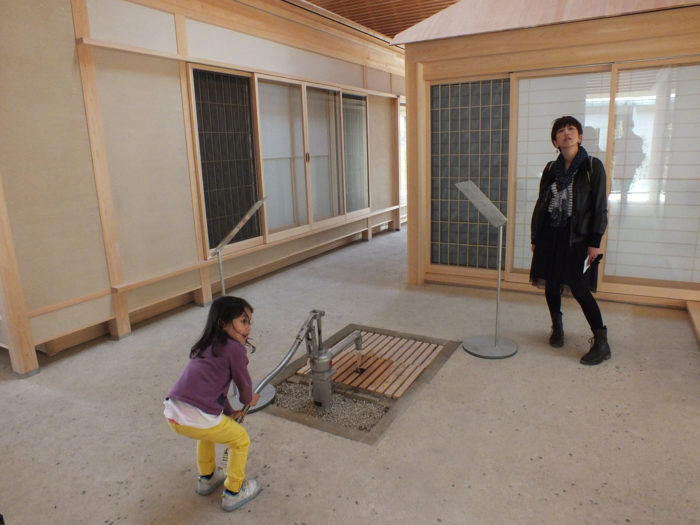
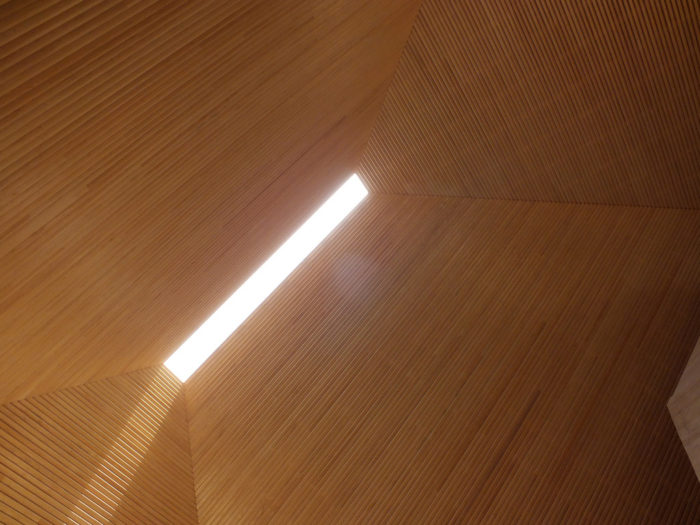
Next, let’s head to the actual hall:
Inside, a very large event space, entirely lit by natural light and ventilated thanks to some canalisations making the air run all around the building without creating drafts.
Right next to it, a temporary exhibit called the Naoshima Plan. It shows some of Sambuichi’s future plans for the island. I assume that some will become reality, some won’t.
During the Setouchi Triennale, also note that you can find another temporary exhibit in Honmura, simple called Naoshima Architects. It’s a retrospective covering the creation of the island’s main buildings, including pictures, models, blue prints and so on. Fascinating if you care about architecture.
Soon after, it was time to return to Miyanoura, but as we had some time left before the ferry, we took a few strolls in the port, starting with Miyanoura Gallery 6 to see 100 Living Tales by Yuki Iiyama. It’s a “written” exhibit where more or less supernatural stories were told to the artist by people from Naoshima and other neighboring islands, and then were transcribed on wooden panels that were exhibited. A quite interesting and original exhibit, and I have to admit that I’m very happy that the written and narrative medium is finally represented at the Triennale, even just a little bit. Sadly, this exhibit was only open in the Spring. Other temporary exhibits will occupy the space in Summer and in Fall.
Naoshima Bath « I♥︎湯 » by Shinro Ohtake
Red Pumpkin by Yayoi Kusama
If you’ve seen it in the past, did you notice how it’s not on the grass anymore, but on this “covering” made of I’m not sure what. I guess the place has become so popular that the grass never has time to grow back, and all that dirt around the pumpkin had become a bit too unsightly.
Bunrakku Puppet by José de Guimarães
I wasn’t very impressed by it, but apparently, it must be seen at night, not so much during the day; the colored lines you can see being neon lights. (apparently, it’s not new and has been here for a few years… I had never paid attention to it before… whoops…)
A pretty strange looking embarcation. I think that it’s used to harvest seaweed, but I could be wrong.
Naoshima Pavilion by Sou Fujimoto
And that’s pretty much it for this visit of the Setouchi Triennale 2016 on Naoshima during the Spring session.
As usual, if you like what you read and saw, the best way to thank me is to share it on your social media of choice.
See you later Naoshima, probably this Fall…
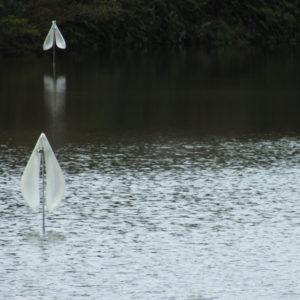
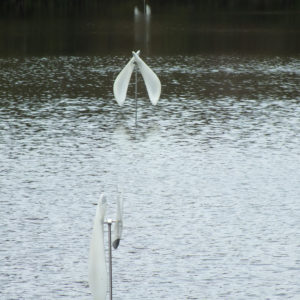
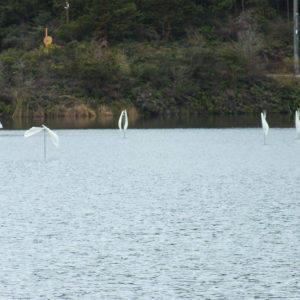
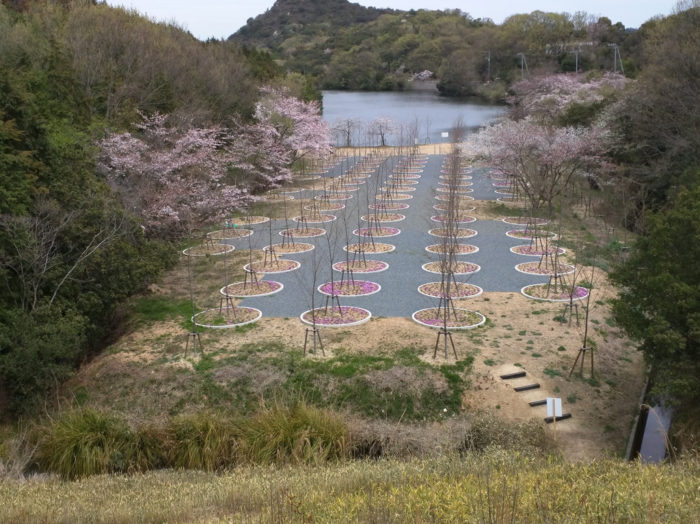
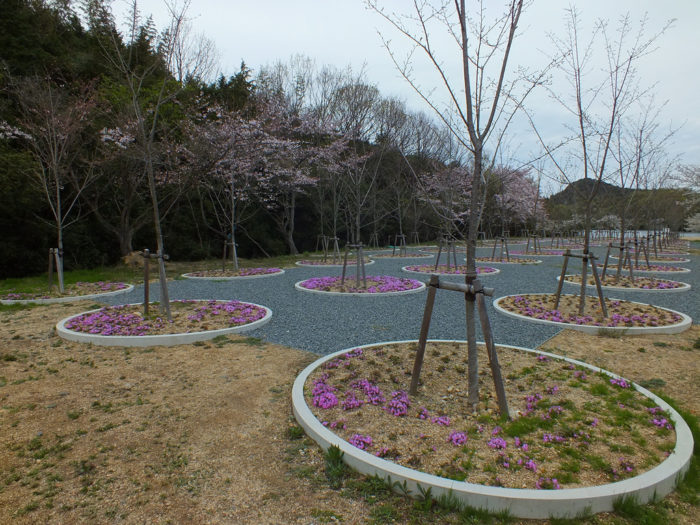
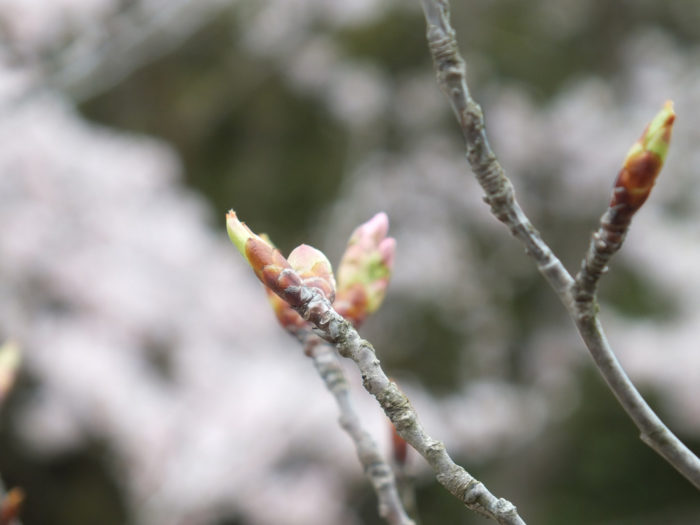
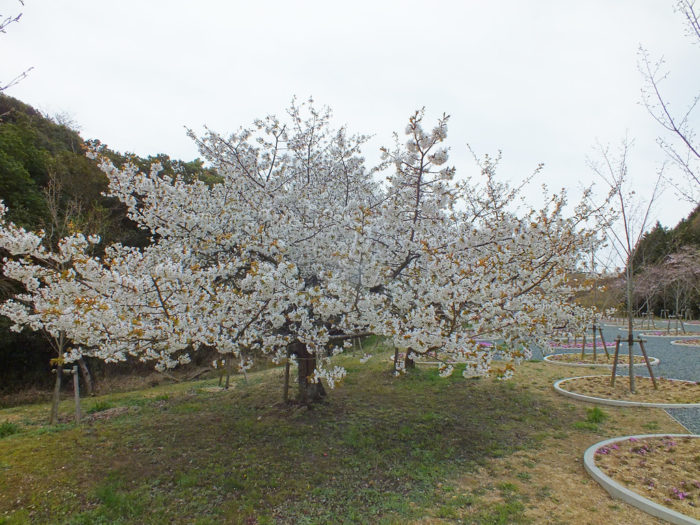
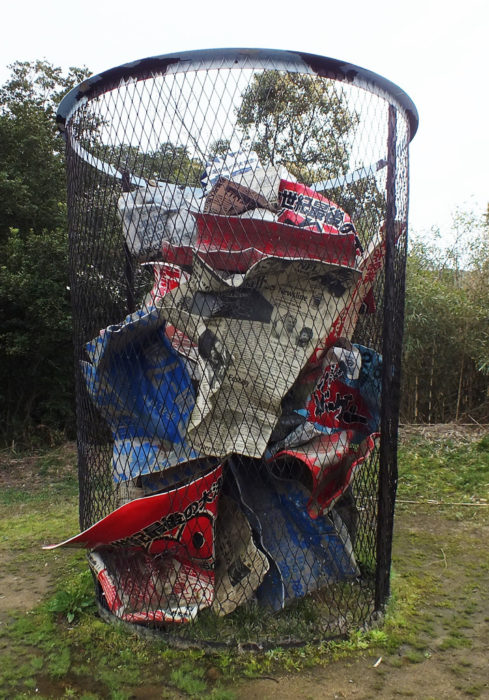
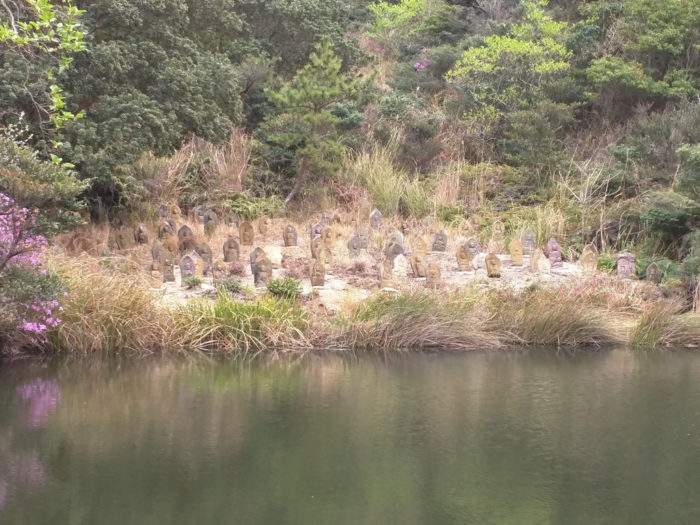
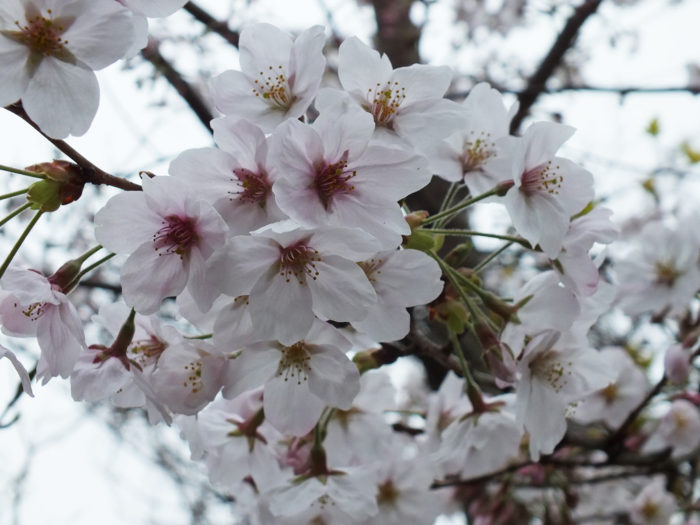
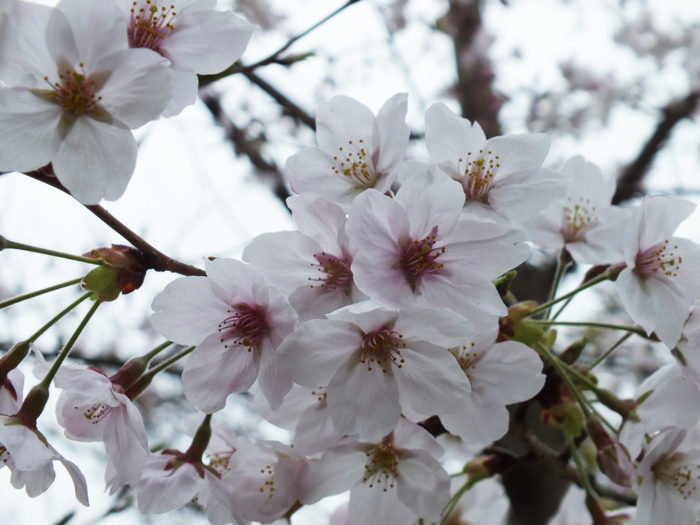
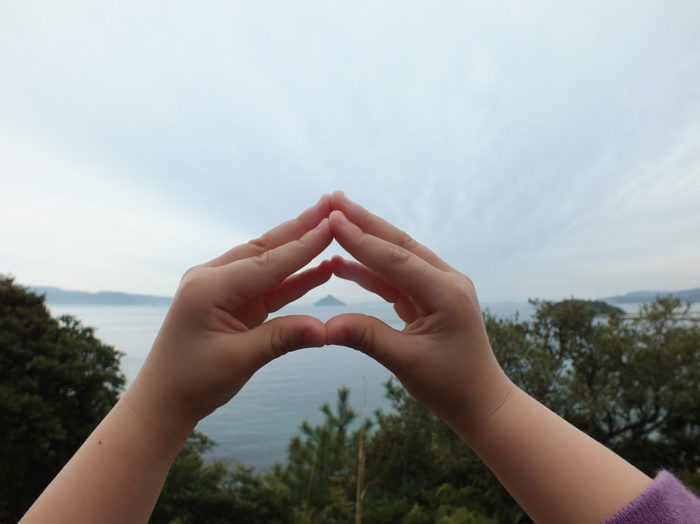
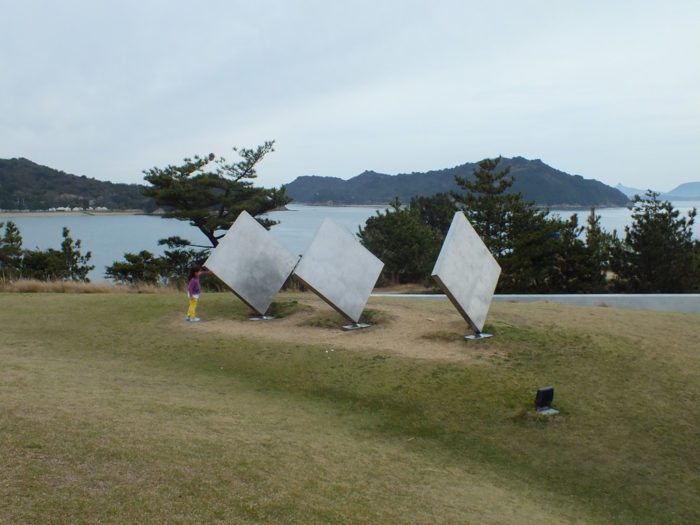
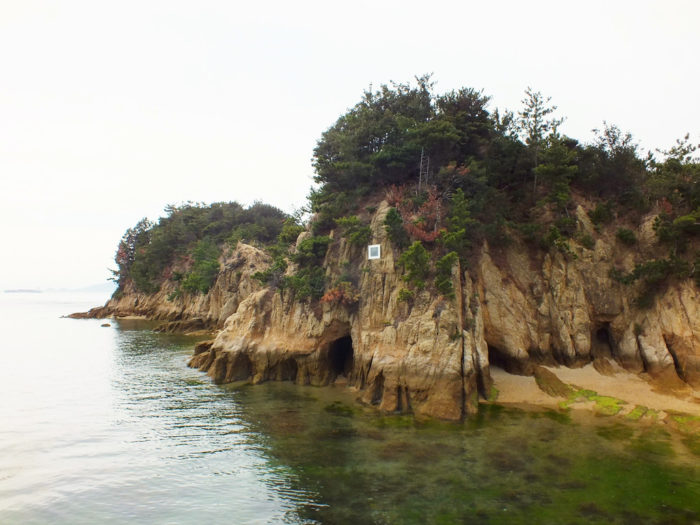
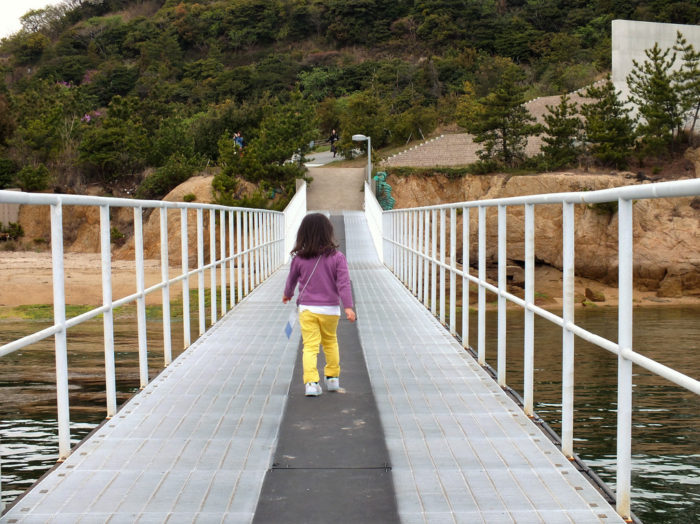
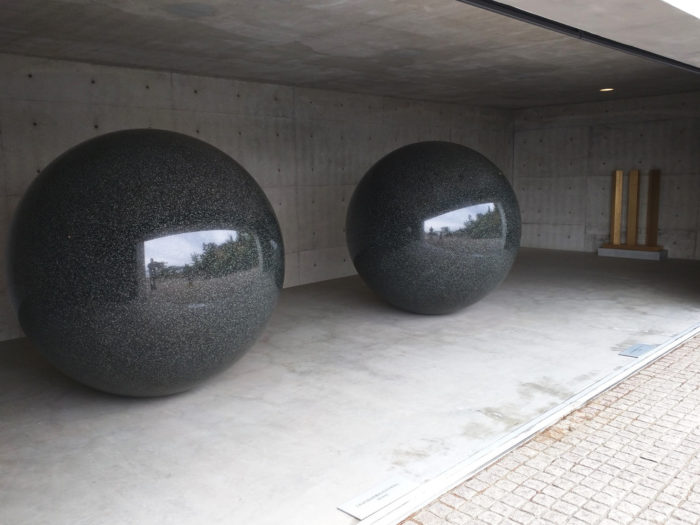

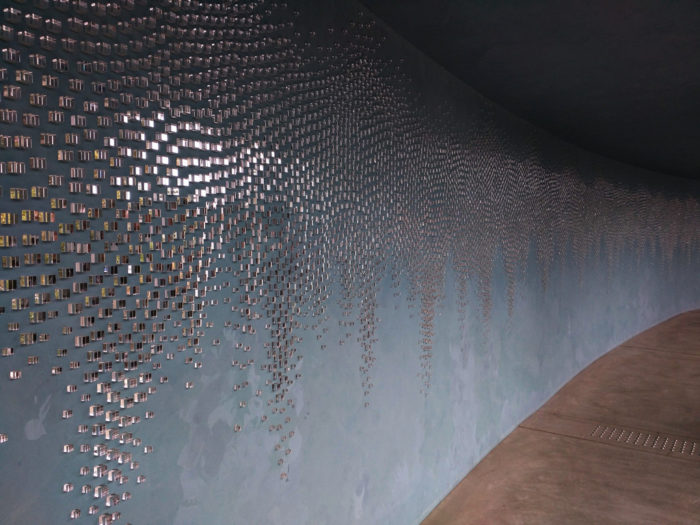
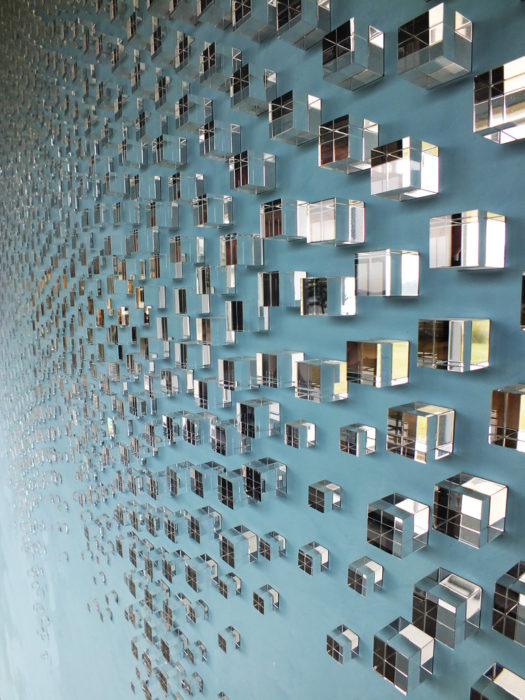
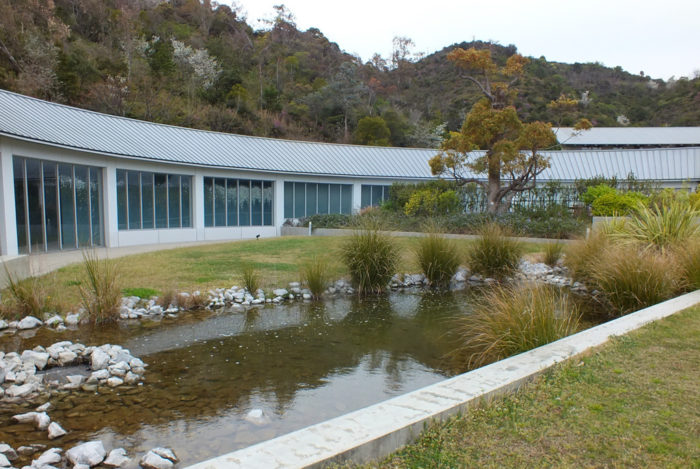
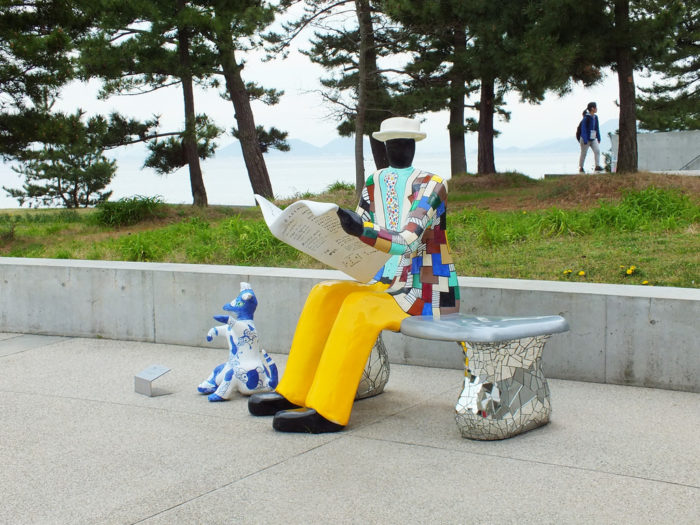
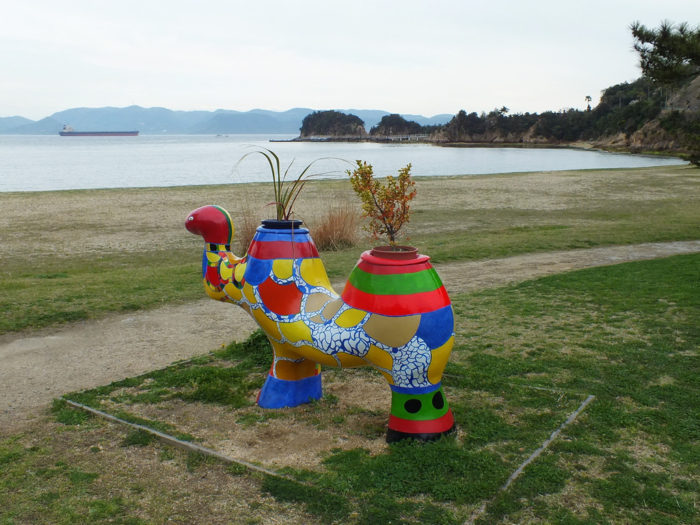
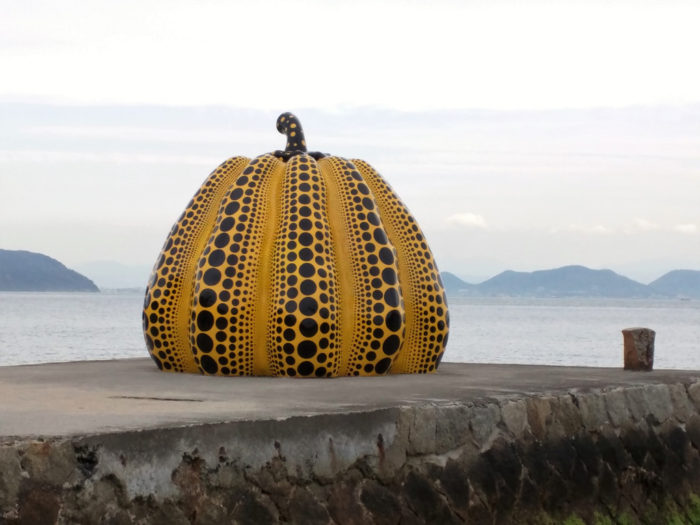
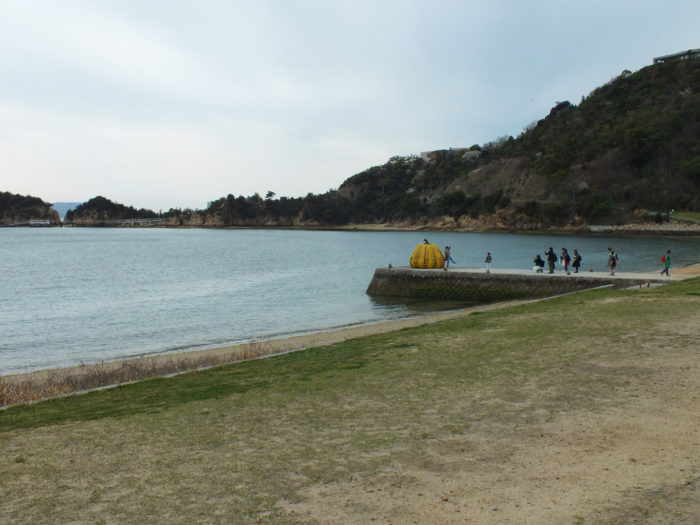
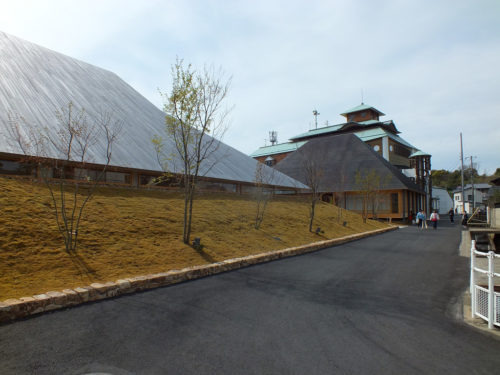
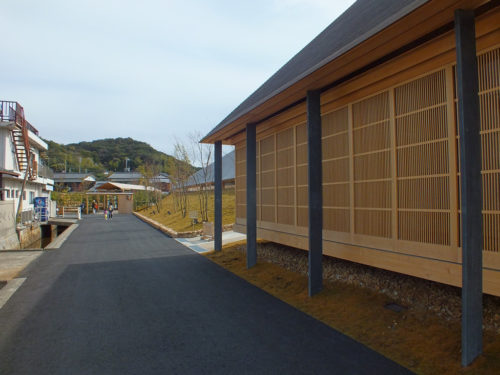
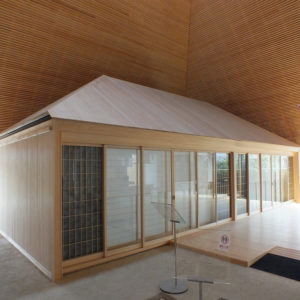
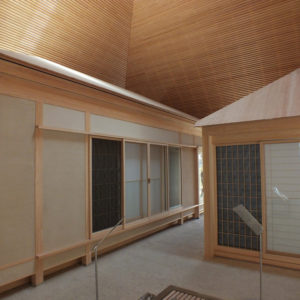
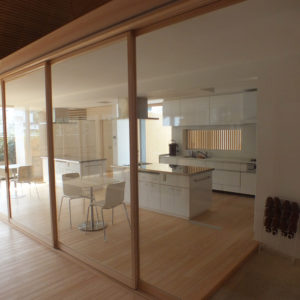
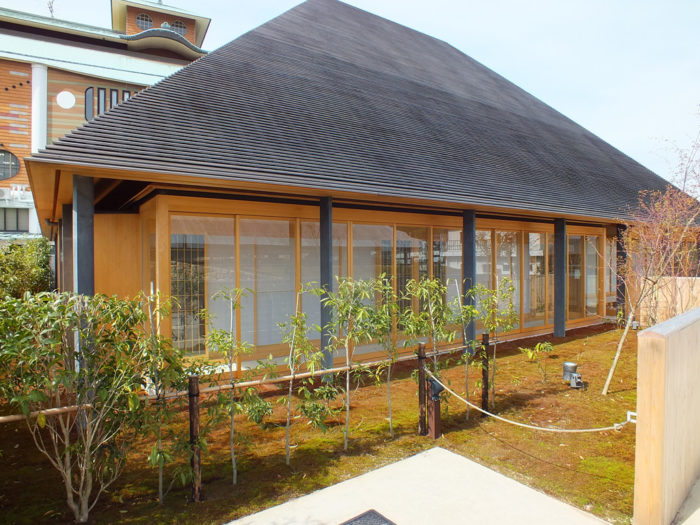
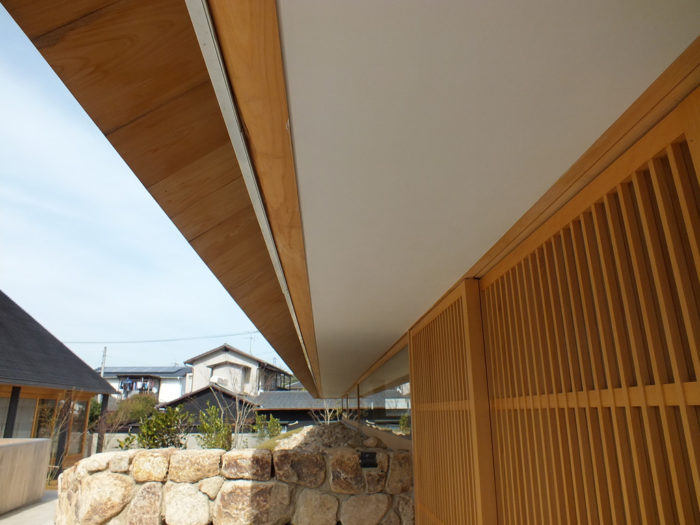
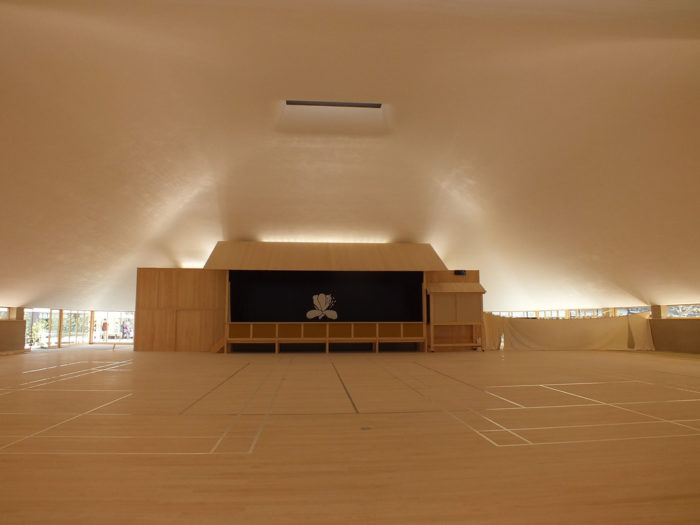
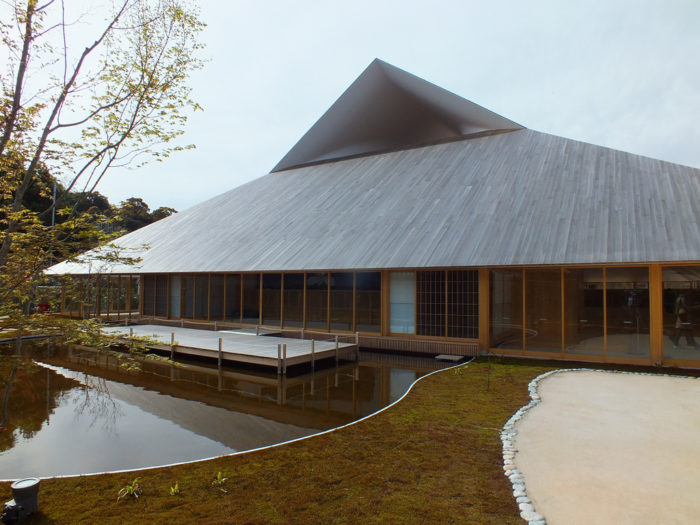
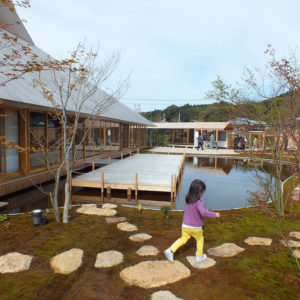
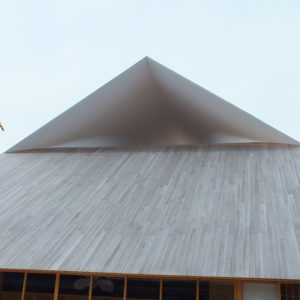
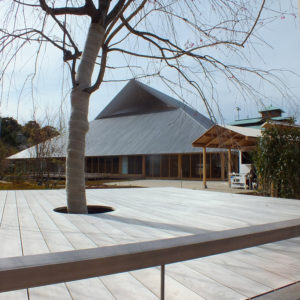
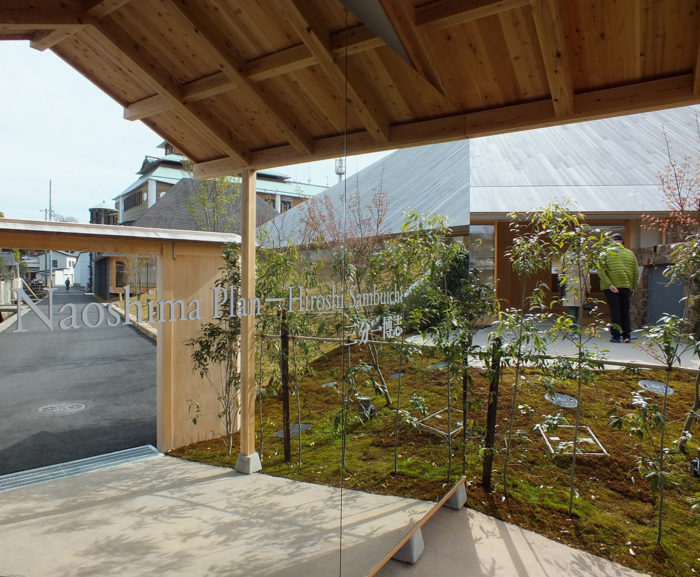
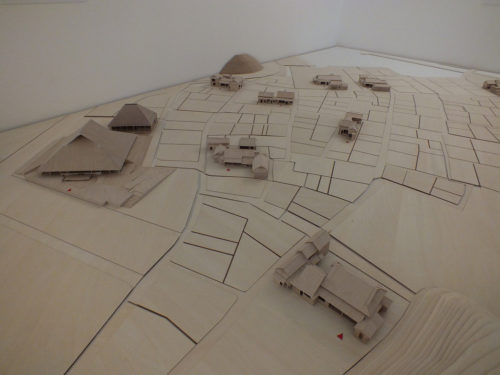
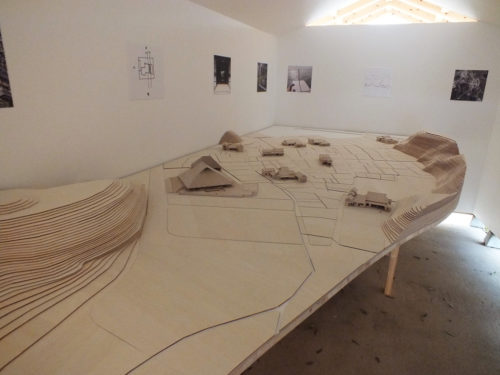
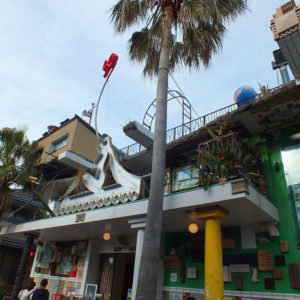
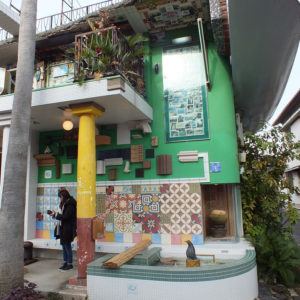
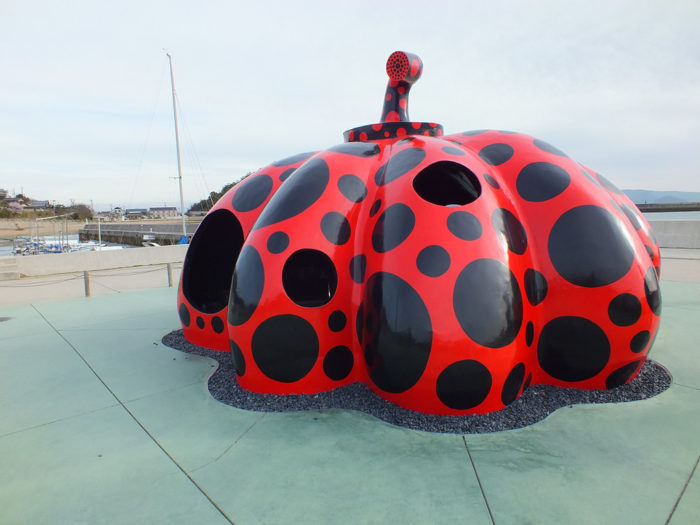
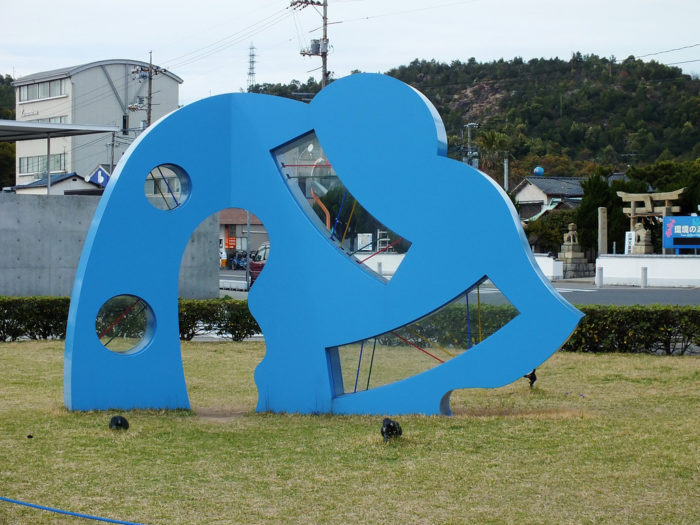
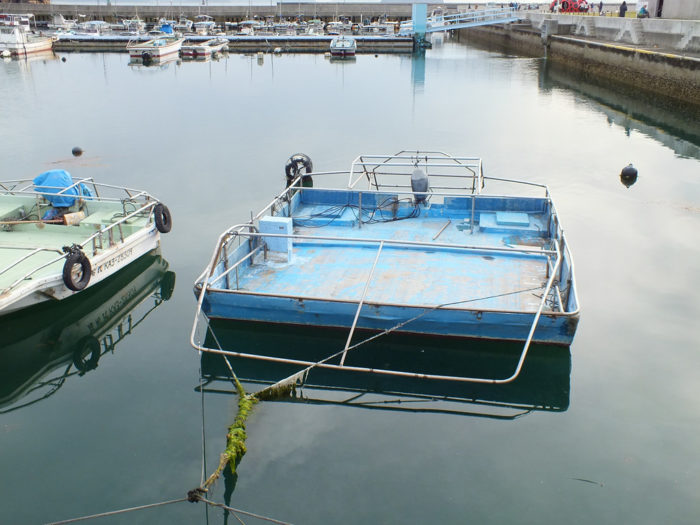
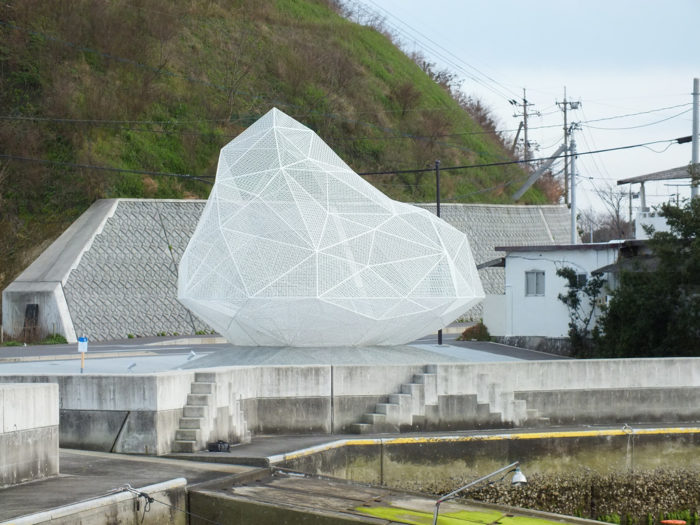
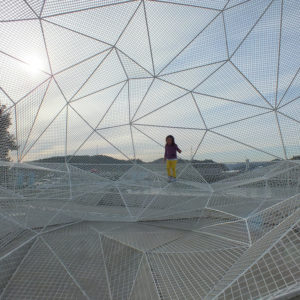
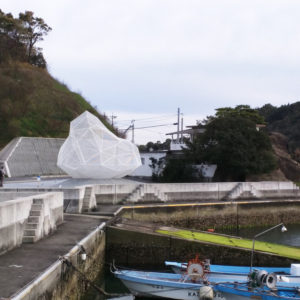
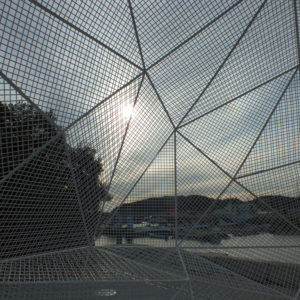
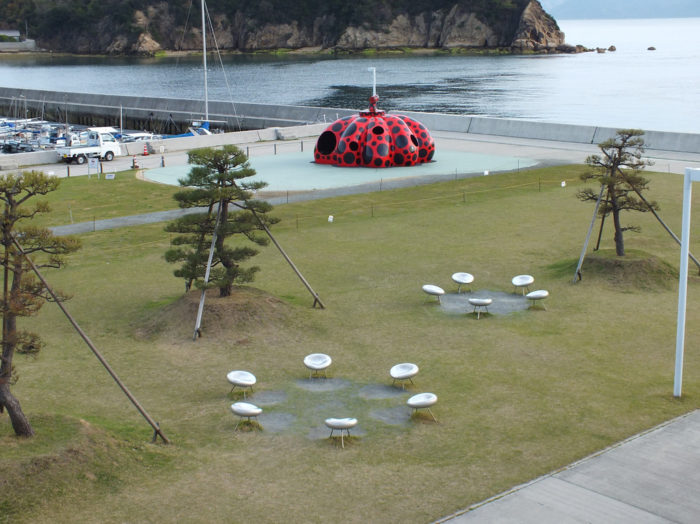
David, Veronica and I took your advice and did this for two days visiting the Spring session of the Triennale last few days in early April:
A) took a whole day to do Ogijima, instead of trying to do Megijima as well
B) avoided Naoshima totally, and spent a day on Teshima.
Fantastic outcomes! I will get around to describing it sooner rather than later on my blog!
Thanks for trusting my advice and glad it turned out well.
Ogijima and Teshima really are the best islands in the area, and whatever island one decides to visit the key is to not rush, just enjoy the surroundings and whatever comes your way. 🙂